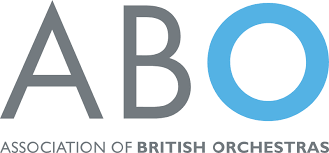
10 Point Action Plan : Hiring and recruitment in UK orchestras
Good practice recommendations
Intro
This 10-Point-Plan is a codesigned, consensual and realistic plan that orchestras can use to implement more inclusive recruitment of musicians. Its recommendations are based on findings, observations and comments made throughout a series of meetings in 2023. The meetings involved orchestral musicians and representatives of the managements of UK orchestras. They were convened as part of a collaborative approach between the Association of British Orchestras, Black Lives in Music and the Musicians’ Union.
The plan aims to support a unified approach of recruitment of musicians in orchestras in the UK classical music sector. The plan is designed to be sufficiently flexible to enable orchestras with different employment models to address traditional challenges of fair recruitment and to share an understanding of best practice with the specific objective of workforce development and nurturing an inclusive culture in orchestras.
Alongside the recommendations, the three named organisations will work together to support participating orchestras through sharing of assembled resources and monitoring the take up and impact of the recommendations. To that effect, orchestras will be invited to commit to the 10-point plan through a simple sign-up process. Each orchestra will be encouraged to target and execute 2 actions from the plan per year. This will enable further development and tracking of the work in practice. The work is ongoing, and an annual review will enable further refinement in response to feedback and lessons learned during implementation.
Inclusive recruitment in orchestras
10 Point action plan
1
Regular open calls for Extras and Deputies
2
Inclusion of impartial external member(s) on audition panels (without voting rights)
3
All candidates required to audition before being offered a trial (Candidates will not be invited to trial without prior involvement in full recruitment process)
4
Screened early round auditions
5
First round, (proper) auditions with both in person and online options
6
First main round auditions to include an unaccompanied/accompanied work and reasonable number of excerpts.
7
Audition panellists to receive inclusivity training within the 3 month period prior to recruitment duties
8
Trial process to be streamlined:
Maximum trial period of 2 years for tutti and principal positions. Appointments to be confirmed within 3 months of completion of all trials.
9
All audition panels to keep a thorough and robust record of auditions and decisions during the trial process. Candidates should be assessed using a clearly defined scoring framework alongside a documented and robust anecdotal narrative.
10
Anonymised application process
Notes
- Action 1 – Orchestras and ensembles are encouraged to work together and share resources according to geographical location in order to make this as practical an activity as possible. Open auditions should be held according to instrument, and on a meaningful and regular basis.
- Action 2 – Resource and infrastructure support on offer from ABO, BLIM, MU to help facilitate this action.
- Action 3 – It’s recognised that repeated iterations of the recruitment process may still fail to yield a suitable candidate for appointment. In this event, and on the grounds of economic prudence, targeted recruitment is a reasonable option, though candidates in this instance will still be required to observe the audition process prior to any formal offer of a permanent position.
- Action 5 – Whereupon a candidate is unable to attend the first-round, proper auditions candidates should be invited to an equivalent online audition, or if they are a UK based Orchestra to provide a means tested resource support for candidates to attend. This presupposes that orchestras/ensembles will allow for protected funds in future budget lines for audition support of candidates as part of their ongoing commitment to equitable recruitment processes and in line with continuing EDI sensitivities.
- Action 6
- 5.1)This action is based on the establishment of a ‘pre-audition round’ to ensure all candidates meet the criteria for consideration.
- 5.2)This action includes candidates identified as a result of targeted recruitment (please see note 3 above).
- 5.3) Accompanied/unaccompanied nature of audition repertoire requirement to be determined by the audition panel as is appropriate to the instrument, and
- musical/technical criteria for recruitment selection. An unaccompanied piece or appropriate chamber music opportunity is an acceptable alternative though a piece written with accompaniment is to be discouraged as an unaccompanied offering without good reason.
- 6 Action point 8
- This action acknowledges the nuances of difference in working models and patterns. 6.1) Orchestras and ensembles working a less intensive programme will need to reasonably extend the length of the trial process to reflect their own specific working pattern. Essentially, this should not extend beyond reasonable as per their own working considerations.
- 6.2) Recruiters to commit to a robust process. This activity includes regular updating of candidates and internal monitoring of process in the interests of expedience.
- 6.3) Initial internal recruitment process to clearly define the prerequisites of the position to enable effective candidate selection.
- 6.4) Additional considerations to be implemented to ensure process is equitable. This may mean in the case of younger candidates; the trial process is extended to reasonable but not exhaustive length.
- 7 Action point 9 – scoring framework to suggest attainment in areas to include Knowledge of excerpts, tonal quality, technical considerations, musicality etc. Scores from the panel to be aggregated as an indicator of attainment with a documented anecdotal narrative to support a robust and transparent decision-making process for all candidates.
- 8 Action point 10 – All personal data collected as part of the recruitment monitoring process should be collected separately and anonymity preserved. Best practice to reflect that as outlined by the Musicians’ Union. Their guidance can be found here.
Participating Orchestras
Academy of St Martin in the Fields
Aurora Orchestra
Bath Philharmonia
BBC Concert Orchestra
BBC National Orchestra of Wales
BBC Philharmonic Orchestra
BBC Scottish Symphony Orchestra
BBC Singers
BBC Symphony Orchestra
Bournemouth Symphony Orchestra
Britten Sinfonia
City of Birmingham Symphony Orchestra
English National Ballet
Glyndebourne Sinfonia
Hallé
Hebrides Ensemble
London Mozart Players
London Philharmonic Orchestra
London Sinfonietta
Manchester Camerata
Orchestra of the Royal Opera House
Red Note Ensemble
Philharmonia Orchestra
Royal Liverpool Philharmonic Orchestra
Royal Philharmonic Orchestra
Royal Scottish National Orchestra
Scottish Chamber Orchestra
Scottish Ensemble
Scottish National Jazz Orchestra
Sinfonia Viva
Southbank Sinfonia
Ulster Orchestra
Welsh National Opera
Glossary / terms
Screened audition
where the performer is hidden from the judges or panellists. This is achieved via the use of a partition or screen between the auditioning candidate and audition panel. The ‘screen’ should be fully functional in protecting the physical identity of the candidate from identification by the panel.
Early round audition
auditions (including first-round (proper), held prior to shortlisting selection for the trial phase
First round, (proper) audition
the first round of audition involving applicants who have been deemed to meet standard employment criteria. This may also be a preselection round in the case of a high number of applicants and multiple audition rounds are required prior to shortlisting for the trial phase.
First, main round auditions
auditions involving applicants who have passed any preselection round (should the orchestra have held a preselection round on grounds of an overwhelming number of applications). An orchestra may choose to hold a preselection round prior to first round, (proper) audition if applicant numbers are particularly high.
Anonymised application
The anonymising of candidate identity by redacting personal information that might lead to the identity of the candidate. As well as the written application, this includes the physical iteration of the application process, where practical, and including screened early round auditions (prior to the trial phase) as outlined previously.
Your Pledge
"Yes, we would like to sign up to the BLiM 10 Point Plan!"
By submitting this form, you confirm that you have read and agree with our privacy policy.
Thanks, ...
... for signing up to the BLiM 10 Point Plan. A member of our team will be in touch shortly to discuss next steps.


